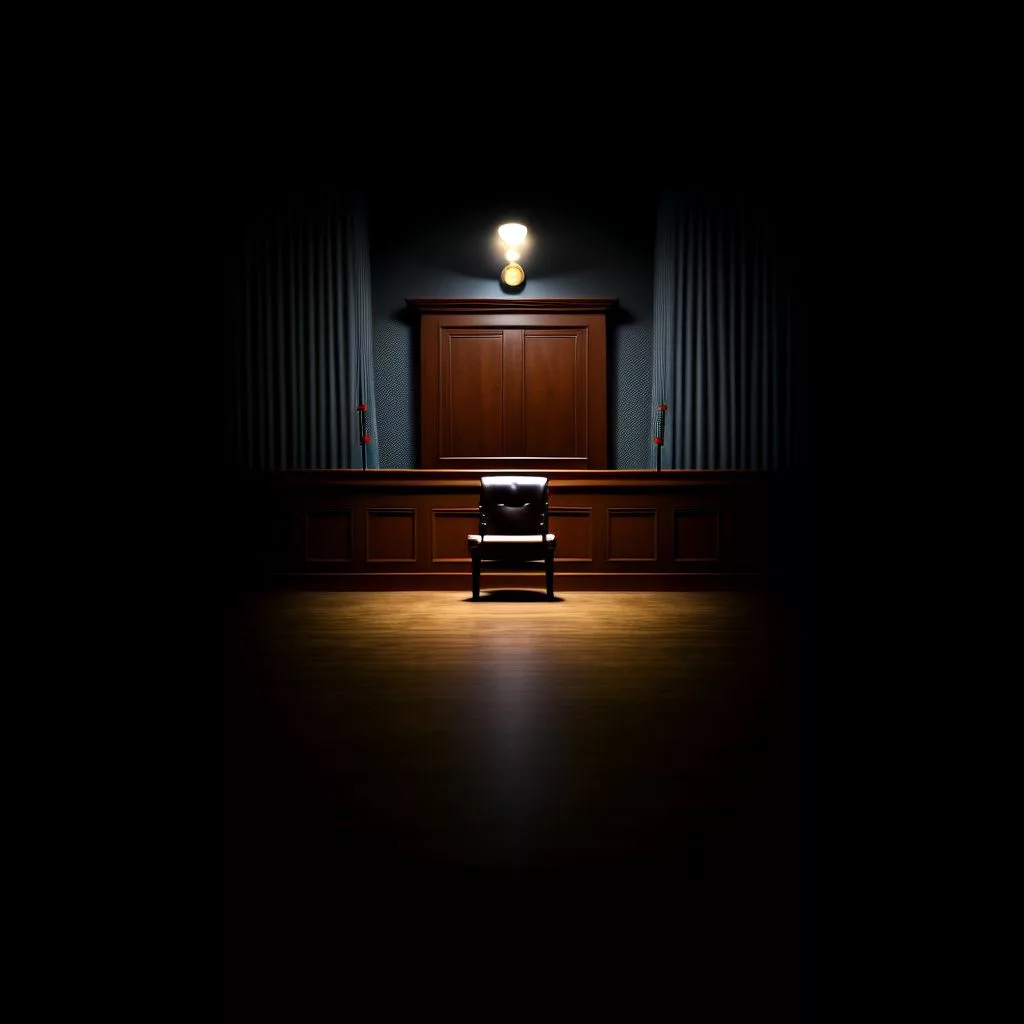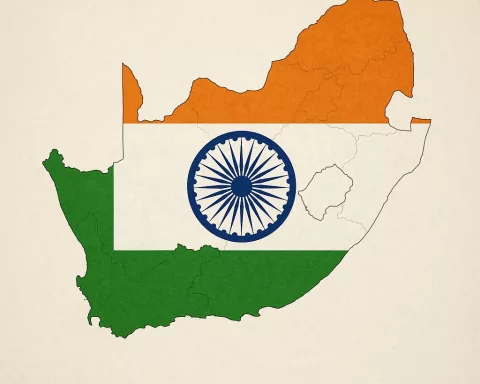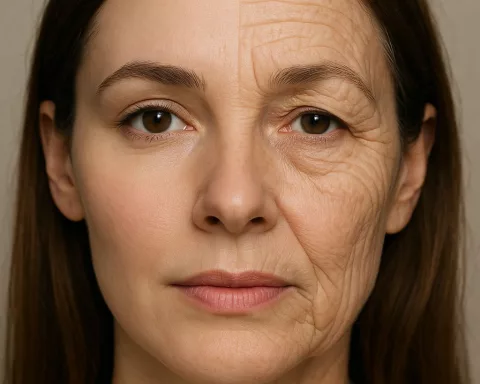The Joshlin Smith case in Saldanha Bay is a tense legal battle about serious human trafficking charges involving a missing child. The quiet fishing town became a spotlight for grief and hope as the courtroom drama unfolded, relying heavily on witness testimony with little physical proof. The defense challenged the weak evidence, while the community and media watched closely, showing how justice is both a legal fight and a story told through public eyes. This case reveals South Africa’s struggle to find truth and fairness amid deep pain and uncertainty.
What is the Joshlin Smith case in Saldanha Bay about?
The Joshlin Smith case involves allegations of human trafficking against Kelly Smith and associates in Saldanha Bay. The trial highlights South Africa’s legal process, reliance on witness testimony, and the challenges of proving cases without physical evidence under the Prevention and Combating of Trafficking in Persons Act.
The Fishing Town in the Spotlight
Early 2024 cast the serene fishing community of Saldanha Bay into the glare of national attention. Once known for its tranquil coastline and bustling markets, the West Coast town found itself at the heart of a deeply emotional and legally complex criminal case. The local White City Multipurpose Centre, typically reserved for weddings and community celebrations, abruptly became a courthouse as the search for justice in the disappearance of young Joshlin Smith took center stage.
The sudden transformation of a familiar gathering place underscored the gravity of the situation. Residents, bound by shared grief and a longing for resolution, gathered alongside national and international media. The drama unfolding inside the makeshift courtroom captivated the public, not only because of the missing child, but also because of the emotional and legal storms swirling around her mother, Kelly Smith.
Community members, still raw from Joshlin’s disappearance, found themselves both witnesses and participants in an unfolding story that intertwined family pain, legal procedure, and a broader societal struggle against child trafficking. The events in Saldanha Bay became a prism through which South Africans examined justice, compassion, and the boundaries of communal solidarity.
Anatomy of a Legal Battle
From the very start, the courtroom drama unfolded with a palpable sense of urgency. Attorney Rinesh Sivnarain, representing Kelly Smith, quickly established a bold defensive strategy. He moved assertively to challenge the state’s case as soon as the prosecution rested, seeking to have all charges against his client dropped. Sivnarain’s approach signaled a readiness not only to contest the evidence but to question the foundations upon which the prosecution had built its argument.
The charges themselves carried enormous weight. Smith, her partner Jacquen ‘Boeta’ Appollis, and their associate Steveno Van Rhyn faced allegations of human trafficking—specifically, that they trafficked Smith’s own daughter. The legal proceedings drew upon South Africa’s Prevention and Combating of Trafficking in Persons Act, a statute reflecting both local realities and international human rights norms. The stakes could not have been higher for everyone involved, from the accused and their families to an anxious public.
South Africa’s legal traditions, an intricate blend of British and Roman-Dutch influences, provided the backdrop to the trial. These traditions emphasized adversarial procedure, the presumption of innocence, and the centrality of witness testimony when direct evidence was scarce. In this environment, the credibility and consistency of witnesses became crucial, often making the difference between acquittal and conviction.
Witnesses, Evidence, and the Burden of Proof
As the case progressed, the spotlight shifted to Laurentia Lombaard, the prosecution’s single witness. In trials where physical evidence is limited, the strength or weakness of testimony frequently determines the outcome. Sivnarain zeroed in on this vulnerability, using cross-examination to highlight inconsistencies and contradictions in Lombaard’s statements. He argued forcefully that her account faltered under questioning and failed to provide the necessary substance for conviction.
This approach drew on traditions reaching back to ancient legal systems, where the art of cross-examination and the weight of oratory could tip the scales of justice. Sivnarain’s critiques—pointing out that Lombaard’s testimony “was inconsistent” and “contradicted itself”—resonated with both the judge and the public. The defense attorney’s stance challenged not just the details, but the very reliance on a single, embattled witness in the absence of compelling physical evidence.
Kelly Smith, meanwhile, invoked her constitutional right to remain silent, refusing to testify or call additional witnesses. While some outsiders misconstrued this as evasive, it was a deliberate legal maneuver. In South African law, the accused bears no burden to prove innocence; instead, the state must build a convincing case. The defense gambled that the prosecution’s evidence would fall short, requiring no further rebuttal from their side.
Spectacle, Scrutiny, and the Role of Public Opinion
Outside the courtroom, the case took on a life of its own. A pivotal moment occurred when Gayton McKenzie, leader of the Patriotic Alliance, interviewed Kelly Smith at a local Spur restaurant. This public interaction, widely shared on social media, blended elements of political theater and personal tragedy. It exemplified how legal proceedings today often spill into digital and political arenas, where visibility and narrative can shape popular opinion as powerfully as any verdict.
The proliferation of such content highlights the evolving relationship between media coverage and judicial process. South Africa’s vibrant, sometimes sensationalist press amplified the emotional stakes, offering the public a window into the proceedings while also risking the spread of rumor and conjecture. In this charged environment, distinctions between legal evidence and public perception often blurred, complicating the search for truth.
The judicial system itself offers safeguards against such pressures. After the state presented its case, both Sivnarain and Van Rhyn’s defense invoked Section 174 of the Criminal Procedure Act. This statute allows the court to acquit if the prosecution fails to present a prima facie case—a critical protection against wrongful conviction based on insufficient evidence. Judge Nathan Erasmus, presiding over the proceedings, cautioned that certain aspects of Lombaard’s testimony still implicated Smith and Van Rhyn, making it imperative for the defense to address those allegations with care.
Legal Traditions Meet Deep Community Pain
Beneath the procedural arguments, the case laid bare intense emotional and social currents. Trials involving missing children are always fraught, forcing communities to confront their fears and hopes in equal measure. The law, in these moments, must balance empathy with rigor, protecting the rights of the accused while seeking justice for the vulnerable.
South Africa’s struggle against human trafficking remains an ongoing challenge. The country’s comprehensive anti-trafficking laws, shaped by internationally recognized standards and inspired by a history of human rights activism, have brought progress but also highlighted persistent difficulties in enforcement. Cases like Joshlin Smith’s emphasize the reliance on witness testimony when forensic evidence is lacking, placing enormous pressure on both legal teams and communities desperate for answers.
This dynamic echoes historical precedents, such as the high-profile trial of Zephany Nurse’s abductor. There, the presence of DNA evidence alongside witness statements provided a clearer path to justice, but the influence of media and public opinion remained ever-present. In Joshlin’s case, the absence of physical proof left the fate of the accused hinging on interpretation and persuasion.
Art, Justice, and the Ongoing Narrative
The tension between accusation and defense, fact and interpretation, found a visual echo in the world’s artistic heritage. From Caravaggio’s dramatic, shadowed paintings to Rodin’s solemn sculptures, artists have long grappled with the ambiguity inherent in the pursuit of justice. The Saldanha Bay proceedings embodied these age-old dilemmas: clarity and doubt, hope and despair, all playing out beneath the fluorescent lights of a community center repurposed into a courtroom.
In today’s media-saturated age, the role of the press and political actors only deepens these complexities. McKenzie’s interview and its viral aftermath transformed a local criminal case into a national conversation. With every article, video, or tweet, South Africans debated not only the specifics of the Smith case but also broader questions about justice, compassion, and accountability.
Defense attorneys like Sivnarain now act not just as legal practitioners, but as storytellers and strategists, navigating courts of law and courts of public opinion alike. Their work requires mastery of narrative as well as precedent, psychological insight as well as legal skill. In high-profile cases, the ability to sow reasonable doubt can prove just as decisive as the marshaling of exculpatory evidence.
Reflections on Justice and the Human Condition
The saga of Kelly Smith and her missing daughter Joshlin calls for a deeper reckoning with the role of law in society. Each actor—judge, attorney, witness, and community member—contributes to a complex tapestry of fact, belief, and feeling. The final outcome, whatever the verdict, will resonate far beyond Saldanha Bay, serving as a testament to the enduring human quest for justice, compassion, and closure in the face of uncertainty and loss.
As the community awaits the court’s decision, the case stands as a powerful reminder: the pursuit of justice unfolds not in isolation, but within the hearts and minds of all those it touches. The story of Joshlin Smith, refracted through courtroom battles, media scrutiny, and communal grief, invites us to reflect on the delicate balance between truth, doubt, and the hope for a fair resolution in a troubled world.
What is the Joshlin Smith case about?
The Joshlin Smith case in Saldanha Bay revolves around serious human trafficking charges against Kelly Smith and her associates, including allegations that they trafficked Joshlin, Kelly’s missing daughter. The trial highlights the challenges of prosecuting such cases in South Africa, particularly when physical evidence is scarce and the case relies heavily on witness testimony under the Prevention and Combating of Trafficking in Persons Act.
Why has Saldanha Bay become central to this legal battle?
Saldanha Bay, typically known as a peaceful fishing town, transformed into the focal point of national attention in early 2024 due to this emotionally charged case. The local White City Multipurpose Centre was repurposed as a courtroom, symbolizing the community’s grief and collective hope for justice. The case deeply affected residents, media, and the wider public, bringing a small town into the spotlight amidst South Africa’s broader struggle against human trafficking.
How does South African law affect the trial’s proceedings?
South Africa’s legal system, influenced by British and Roman-Dutch traditions, emphasizes the presumption of innocence and relies on an adversarial process. The accused are not required to prove their innocence; instead, the prosecution must establish guilt beyond a reasonable doubt. In the absence of strong physical evidence, witness testimony becomes crucial. Legal safeguards like Section 174 of the Criminal Procedure Act allow courts to acquit if the prosecution fails to present a prima facie case.
What role do witnesses play in the Joshlin Smith trial?
Witness testimony is central to the trial’s outcome, especially since physical evidence is limited. The prosecution’s main witness, Laurentia Lombaard, faced intense cross-examination by defense attorney Rinesh Sivnarain, who highlighted inconsistencies in her account. The defense argued that her testimony was insufficient to meet the burden of proof. Kelly Smith’s invocation of her constitutional right to remain silent further emphasized the trial’s reliance on the credibility and consistency of witness statements.
How has public opinion and media coverage influenced the case?
The case has extended beyond the courtroom into public and political arenas. Media coverage, including a widely shared interview between Kelly Smith and political figure Gayton McKenzie, amplified public interest and debate. This visibility illustrates the complex interaction between legal proceedings and public perception, where media narratives can both inform and complicate the pursuit of justice by blurring lines between evidence and opinion.
What broader issues does the Joshlin Smith case highlight about justice in South Africa?
The case underscores ongoing challenges in combating human trafficking in South Africa, particularly the difficulty of securing convictions without strong physical evidence. It reveals tensions between the need for empathy towards vulnerable victims and the imperative to uphold fair legal standards. Moreover, it reflects how justice is intertwined with community emotions, media influence, and the evolving role of defense attorneys as both legal advocates and storytellers in highly publicized trials.








